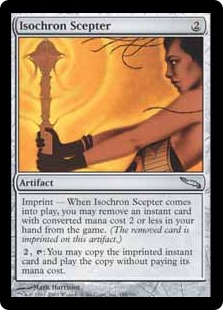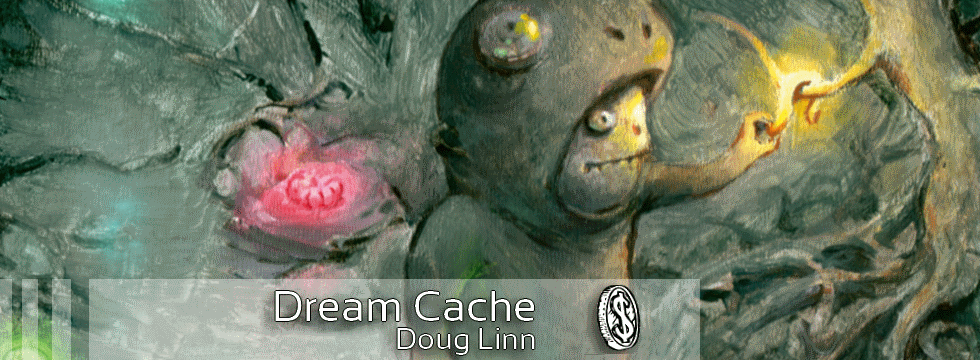Are you a Quiet Speculation member?
If not, now is a perfect time to join up! Our powerful tools, breaking-news analysis, and exclusive Discord channel will make sure you stay up to date and ahead of the curve.
In many ways, Mirrodin is marred by the sets that came after it. Mirrodin was a set focused on artifacts and how they interact with the color wheel, and that was revolutionary at the time. I talked about Invasion awhile ago and how people would have boxes with this little huddle of gold cards, their Wings of Aesthir and Simoon and Dracoplasm bunched up, that thin stack of exotic little spells. Artifacts hold another part of the allure of Magic, in part because I think many early Magic players came from D&D and later ones had

experience with games like Diablo. In these games, the proper equipment is required for your character, no matter what they do. Artifacts, in pre-Mirrodin days, represented rare, wondrous and unusual items. You don't have to look to Moxes for this, you can even look at things like Celestial Sword and Unerring Sling to see the sort of appeal.
Mirrodin took the artifact, changed it from arcane brown to Windows XP silver, and made artifacts a common part of the world. Wizards could store sorcery in their Spellbombs and summon hordes of new and mostly-lame artifact creatures (though a marked improvement over Crystal Golem and Wall of Junk). Mirrodin also had this keyword, Affinity, which was notable for making Tolarian Academy into a keyword. Early Affinity decks were not totally problematic, and were kind of quaint. It took the expansion sets in the block to make players quit Magic in droves.
Mirrodin introduced some really cool spells and effects, though, and many have had an impact on the Eternal formats. Thus, they are still valuable cards. Mirrodin made decks like Stax in Vintage into powerhouses and the essential cards are still climbing. Let's take a look at the hits of the set in this, the first of our two-part look at Mirrodin.
Artifact Lands
The five artifact lands became the poster children for what was flawed in Mirrodin. All of them were painless Ancient Tombs for affinity spells and creatures, and in later blocks, they fed Arcbound Ravager. They ended up getting banned in Standard, because absent Ravager, they were still ridiculous with Krark-Clan Ironworks. The artifact lands are pretty popular for people who want to recreate Affinity, and they are worth picking up simply because huge volumes of them sell as playsets on Ebay for a buck a card. I wouldn't keep these in a trade binder, but they're worth digging up and listing if you'd like to make a little scratch that way.
$1.00
Chalice of the Void
Chalice is a devastating card in Vintage because it plays so well with Mishra's Workshop. Send one out on the first turn for zero and counter all the Moxes. Put it down for one and cut off half the cards in Legacy Threshold. Play it for two and cut off dangerous spells in both Eternal formats. It's a powerful card and a good sideboard option for many players because, cast for zero, it can stop combination decks reliant on Moxes or Lion's Eye Diamond. Chalice was no junk rare when it came out, but its price has been on a slow climb for years. They are binder gold.
$7.00
Chrome Mox
Chrome Mox lives up to the Mox name, which hasn't been sullied like the poor Lotuses have. It is a really good, but not busted, accelerant. Chrome Mox was a huge player in Extended, but since that format dried up and Legacy has no love for it, Chrome Mox is worth much less now. It was also reprinted in foil form as a Grand Prix giveaway, so there are thousands of extra copies floating around. If there's a new breakout deck in Legacy that demands the Mox, I'm sure we'll see it go up in price. As it is, the card is an expensive curiosity for most players.
$10.75
Duplicant
Several Mirrodin cards are huge EDH staples, and Dupe is the first. It saw a bit of play in Vintage because it was one of the few cards that could realistically (and brutally) take care of Darksteel Colossus. It comes in now and then in Legacy MUD decks, but it gets its most love in EDH. Duplicant is an expensive kill spell, but it can blank a big monster, remove it from the Recursion Zone, and turn into that same beastie for combat. On top of that, Big Dupes can be Tinkered in, it can be recurred with Goblin Welder, and it can be discarded to Thirst for Knowledge. Overall, a solid but costly card.
$2.50
Extraplanar Lens

The Lens is another hit EDH card, acting as a one-sided Mana Flare in monocolored decks. The Lens got a little love in people trying to recreate Monoblack Control decks, but it has always been a casual card at heart. The big trick with Extraplanar Lens to make it really one-sided is to play only Snow-Covered lands. It's a big expense, but if you really want to deny your opponents mana acceleration, it's the best way to do it. I find it interesting that Lens is worth so much, even though it is a singleton card for monocolored decks. Impressive!
$3.50
Gilded Lotus
We are wrapping up our EDH money card streak! Gilded Lotus is absurdly expensive because it is a big EDH staple. If Sol Ring is what you want to do on your first turn, Gilded Lotus is what you want as soon as you get five mana. Gilded Lotus may see other casual play, but its value as a Commander dynamo pushes it up. I was surprised to see that it was worth this much, and I am sure that you can get a deal when people assume that it's still worth two bucks. For a card that was nothing when it came out, Gilded Lotus sure has appreciated in value. Not everything with Lotus in it is so bad, after all!
$8.00
Goblin Charbelcher
The allure of Goblin Charbelcher, at its core, is designing a deck with one or no lands in it. That's precisely what the Eternal deck Belcher does. Whether it is fueled onward by Moxes or Seething Songs, Belcher aims to ramp up to seven mana without relying on lands, just to drop the namesake card and deal a whole lotta pain to the opponent. Presumably, Belcher can be used to pop people for four or five damage, but anyone who saw this card immediately strung it together with Mana Severance or the above technique.
I have traded several Belchers to people who have no intention of land-light shenanigans, but simply thought it was a cool and random card. I'll give them that. Goblin Charbelcher has flavor like few other cards, and I'm glad it has fans who want it just for fun.
$2.00

Isochron Scepter
Clearly, this is valuable for the Time Walk combo.
[reads card]
Oh, hum. Let's try something else.
While you can't put Time Walk on the Stick, you can definitely put Orim's Chant on it. This spell functions as a Time Walk, since you can kick it when you activate it. This was central to a big Extended strategy that would use lots of counterspells and Scepters, alongside goodies like Lightning Helix and Fire/Ice, to grind down the board until the opponent ragequit or got burned to death. Isochron Scepter is a fun and amusing casual card, because people get so jazzed about putting Counterspell on it. That's a fine approach, but even things like Brainstorm can be cutthroat. Simply put, there isn't really a spell that you would put in a deck that fit the Scepter's requirements that you didn't want to cast each and every time you got the chance.
$4.50
Lightning Greaves
The future of Lightning Greaves as a money uncommon is uncertain. The card has been reprinted at every opportunity, and while I paid $4 for one a few months ago, the price has dropped quite a bit on them now. That's because they are showing up in every preconstructed Commander deck, driving down the desire for the card in casual circles. Lightning Greaves sees little tournament play in Legacy, so the card is mostly effective in EDH circles. With so many new copies coming out, I would not be surprised to see them drop even more.
$2.50
That's it for this week of Mirrodin; join me next week as we take a long look at a game-changing Legendary Artifact, a card that combines hilariously with Lich, and the dominant card after Affinity finally got axed. Until then,
Doug Linn





Great article Doug. I remember the loads of booster drafts we did during the Fifth Dawn block, and all the crazy multiplayer games that ensued. This article sure brings back some good memories. *thumbs up*